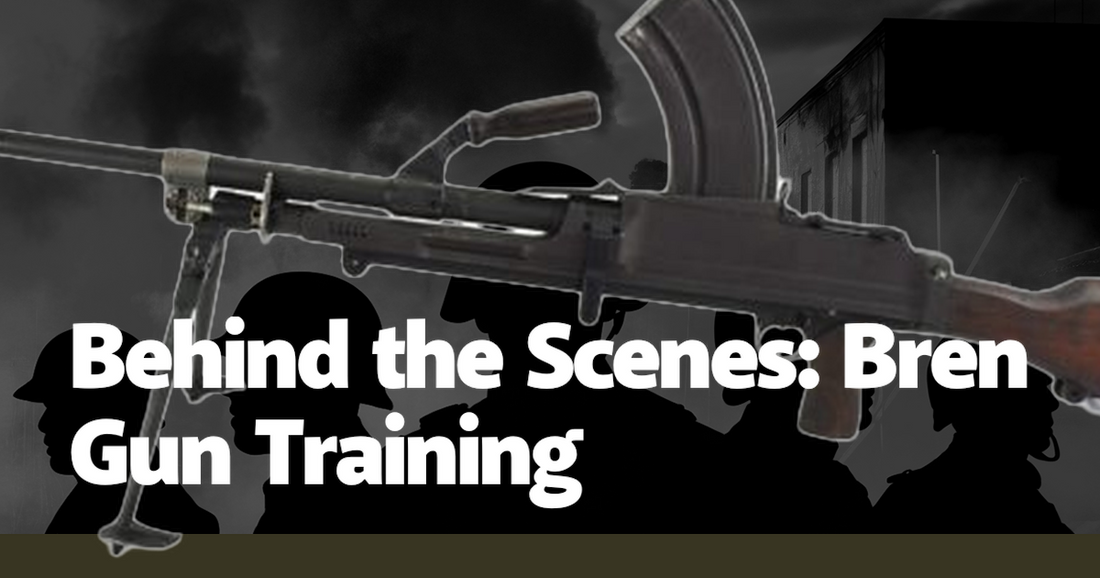The clinking of metal, the scent of gun oil, and the shouts of instructors form the backdrop of Bren gun training, an experience that is as grueling as it is transformative. For many soldiers during World War II, mastering the Bren light machine gun was not just about learning to fire a weapon; it was about understanding a complex piece of machinery that could mean the difference between life and death on the battlefield. The Bren, with its distinctive top-mounted magazine and bipod, was a marvel of engineering, and its training was designed to ensure that every soldier could harness its full potential.
Training sessions often began with the basics: disassembly and reassembly. Soldiers were required to strip the Bren down to its individual components and then reassemble it, often under the watchful eyes of seasoned instructors. This was not merely a test of dexterity but a crucial exercise in familiarizing oneself with the weapon's inner workings. One veteran, recalling his training days, described the process as "learning to dance with a partner who could turn deadly if you missed a step." The tactile memory developed through these repetitive drills ensured that soldiers could perform maintenance and repairs even under the most stressful conditions.
Marksmanship was another critical component of Bren gun training. Unlike standard rifles, the Bren's weight and recoil required a different approach to aiming and firing. Soldiers spent countless hours on the range, learning to control their breathing, steady their aim, and fire in controlled bursts. The instructors, often veterans of previous conflicts, emphasized the importance of precision over volume. "A single well-placed shot is worth more than a hundred misses," they would say. This philosophy was ingrained into every trainee, fostering a sense of discipline and patience that would serve them well in combat.
One of the most challenging aspects of Bren gun training was learning to operate the weapon under simulated combat conditions. Training fields were transformed into mock battle zones, complete with trenches, obstacles, and enemy targets. Soldiers had to navigate these environments while carrying the heavy Bren, all the while maintaining their focus and composure. The physical and mental demands of these exercises were immense. One soldier recounted an exercise where he had to crawl through mud under barbed wire while firing at targets, a harrowing experience that left him exhausted but better prepared for the realities of war.
Teamwork was another crucial element of Bren gun training. The Bren was often deployed as part of a fire team, with one soldier operating the gun and another providing ammunition and support. Effective communication and coordination were essential. Training drills emphasized the importance of trust and cooperation, as each member of the team had to rely on the others to cover their blind spots and provide backup when needed. This camaraderie often extended beyond the training field, forging bonds that would endure through the hardships of combat.
In addition to physical training, soldiers were also taught the strategic use of the Bren gun. Instructors would conduct classroom sessions, using maps and models to explain various tactics and scenarios. Soldiers learned how to position the Bren for maximum effectiveness, how to use it for suppressive fire, and how to conserve ammunition during prolonged engagements. These lessons were reinforced through field exercises, where soldiers had to apply what they had learned in realistic settings. The combination of theoretical knowledge and practical experience ensured that they were well-prepared for any situation they might encounter.
The psychological aspect of Bren gun training was equally important. Instructors often used stress-inducing techniques to simulate the pressures of combat. Loud noises, smoke, and unexpected challenges were introduced to test the soldiers' ability to remain calm and focused. One veteran recalled an exercise where he had to fire the Bren while being bombarded with smoke grenades and shouted commands. "It was chaos," he said, "but it taught me to keep my head and trust my training." This mental fortitude was crucial, as the ability to stay composed under fire could mean the difference between success and failure in battle.
As the training progressed, soldiers developed a deep respect for the Bren gun and its capabilities. They learned to appreciate its reliability, its accuracy, and its power. But more importantly, they gained confidence in their own abilities. By the end of the training, each soldier had not only mastered the technical skills needed to operate the Bren but had also internalized the values of discipline, teamwork, and resilience. These qualities would serve them well, not just in combat but in all aspects of their military service.
In conclusion, Bren gun training was a comprehensive and demanding process that prepared soldiers for the rigors of war. It combined technical instruction with physical conditioning, strategic education with psychological resilience, and individual skill development with teamwork. The stories and experiences of those who underwent this training provide a vivid testament to the dedication and determination required to master such a formidable weapon. For the soldiers who carried the Bren into battle, the lessons learned during training were invaluable, shaping them into effective and capable warriors.

